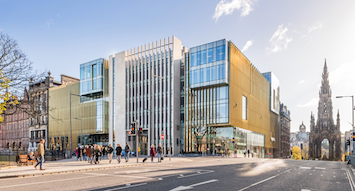The 2014 independence referendum has had a lasting effect on investment in Scotland’s commercial property market, according to new analysis from Knight Frank.
Five years after the ‘indyref’ Knight Frank has found that the buyer pool for Scottish commercial real estate has become more diverse with greater numbers of international investors moving into the market.
Since the vote, overseas investors have increased their investment in Scotland’s commercial property market from £1.6 billion to £5.9 billion.
In the half-decade leading up to the referendum, UK institutions — mainly funds — represented the largest share of expenditure on commercial property in Scotland at 44.82% of the market.
In the subsequent five years, their proportion of investment fell to 25.59%.
While all categories of investors increased their spend in the five years following the vote, overseas investors have raised their share of investment from 22.78% to 42.45% — increasing their capital spend by 271.49%, from £1.6 billion to £5.9 billion.
So far in 2019, overseas investors have represented 55% of total spend on Scottish commercial property and UK institutions 16%.
Korean investors have made three major purchases in Scotland’s central belt this year with the £100 million purchase of the Leonardo Innovation Hub at Edinburgh’s Crewe Toll, a £55 million building let to the NHS at Gyle Square, and Glasgow’s 110 St Vincent Street.
In May, one of Germany’s largest pension funds purchased 4-8 St Andrew Square, home to Aberdeen Standard Investments, for £120 million.
Alasdair Steele, head of Scotland commercial at Knight Frank, said: “Since the referendum, there have been some big changes in Scotland’s commercial property market.
“The most prominent one has undoubtedly been its internationalisation – while UK funds were by far the most prolific buyers in the build up to 2014, afterwards overseas money has become the major force.
“The vote was a turning point.
“In the build-up to the referendum UK institutions paused for thought, which opened up the market for new buyers.
“Since then, we’ve seen investment come in from across the globe, ranging from Middle Eastern and US funds to, more recently, Korean investors acquiring prime buildings.
“While UK institutions remain highly important and have even upped their spend in Scotland following the referendum, the buyer pool has become deeper and more diverse, which can only be seen as a positive development.
“Overseas investors see Scotland as offering relative stability at a competitive price compared to other parts of the UK and Europe.
“They have an almost insatiable appetite for secure, long-dated income, cash-on-cash returns, and prime offices, which Scotland can offer.
“We expect international buyers to remain the main driver of activity in the market for some time yet.”
